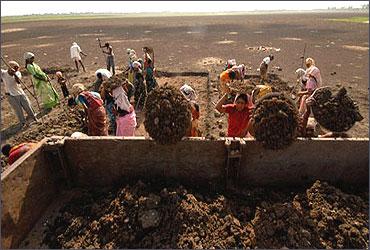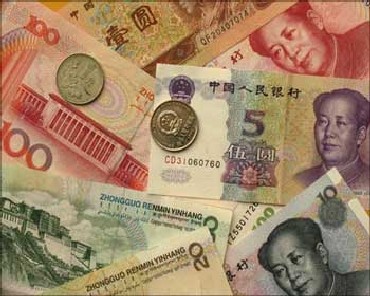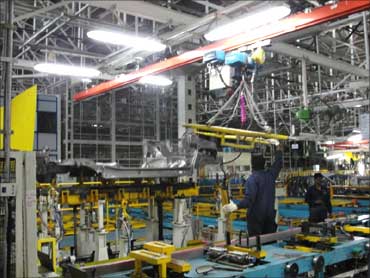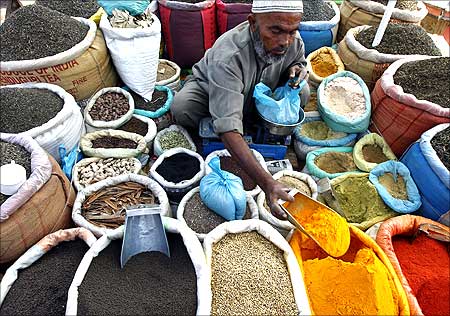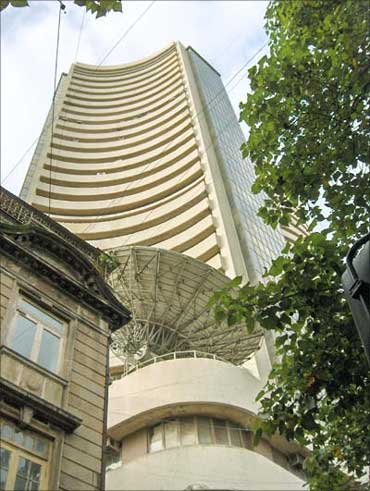 | « Back to article | Print this article |
India's small units faced big problems in 2011
Small is beautiful! So goes the adage.
But the year 2011 was anything but beautiful for India's 26 million micro, small and medium enterprises.
MSMEs contribute immensely to the industrial landscape of the country in terms of their 45 per cent share of manufacturing output and 40 per cent of exports.
The sector provides jobs to 60 million people in different segments such as readymade garments, leather, gems and jewellery, light engineering and handicrafts.
MSME entrepreneurs faced several challenges throughout the year, with the situation worsening as the months went by.
High interest rates, the rising cost of raw materials and labour remained the key input challenges, while demand compression and tough competition, both in domestic and foreign markets, confronted the units as they ventured out to market their produce.
Click NEXT to read further. . .
India's small units faced big problems in 2011
Aggressive China, with which India ran up an over $12.6 billion trade deficit during the April to July period, added to their woes.
"Rising competition from Chinese imports was a cause of concern.
The sector faced a lot of heat because of cheap imports from China.
Besides, the slowdown in Europe and Western countries was the biggest challenge and threat," National Small Industries Corporation chairman and managing director H P Kumar told PTI.
Kumar said Indian MSMEs are at a disadvantage when it comes to interest costs. "We were unable to compete with other Asian economies.
"The high borrowing cost of 13-15 per cent naturally affected our competitiveness, compared to other nations where it was 6-8 per cent."
Click NEXT to read further. . .
India's small units faced big problems in 2011
As the going becomes tough, there is widespread sickness among MSMEs.
According to government data, as many as 91,400 micro and small units had shut down their operations as of March, 2011.
Of these, about 13,000 were added in the fiscal 2010-11.
The reasons for the closure were financial non-viability because of the changing business environment, lack of demand, obsolete technology, non-availability of raw material, infrastructural constraints, inadequate and delayed credit and managerial deficiencies.
The government did chip in to ameliorate the situation, but it will be quite some time before the impact filters through.
On the policy front, the Cabinet approved the Public Procurement Policy for MSMEs.
Click NEXT to read further. . .
India's small units faced big problems in 2011
Under the policy, a minimum share of 20 per cent of total purchases of central ministries/departments/PSUs has been reserved for micro and small enterprises.
Within the 20 per cent share of annual procurement from MSEs, 4 per cent of government procurements has been reserved for MSEs owned by SCs/STs.
Out of 2.6 crore (26 million) MSME units, there are around 118,000 enterprises registered by Scheduled Castes and 44,840 units owned by Scheduled Tribes.
Exports from the labour-intensive sector were also hit.
The decline in export growth was witnessed in segments like readymade garments, leather, machine tools, light engineering and gems and jewellery.
Click NEXT to read further. . .
India's small units faced big problems in 2011
On the domestic front, automobiles and electronics took a hit due to the high cost of raw materials and high interest rates.
"Interest costs went up by 50 per cent. MSMEs were badly affected because of demand constraints," Federation of Indian Small and Medium Enterprises president V K Agarwal told PTI.
To address the situation arising from the global crisis, emanating particularly from European markets, the government also announced a 2 per cent interest subsidy on rupee export credit for carpets, handicrafts, handlooms and small and medium enterprises.
The government made efforts to address the issue of a lack of financial resources, which acts as a deterrent in the growth of MSME units.
Click NEXT to read further. . .
India's small units faced big problems in 2011
Market regulator Securities and Exchange Board of India gave the nod to the BSE and National Stock Exchange to open a dedicated exchange for small and medium units.
During the year, the government felt the need to augment market share for 'khadi' through better branding, marketing and selling strategies by positioning it as an eco-friendly, handmade product with an attached social objective.
Headquartered in Mumbai, the Khadi and Village Industries Commission, which markets khadi and its related items through a string of Khadi Gram Udyogs, was also reconstituted.
The Centre appointed veteran Gandhian Devendra Desai as the new Chairman of the KVIC. The khadi outlets are being revamped and 20 new stores will be opened through partnerships with the private sector at an investment of Rs 150 crore (Rs 1.5 billion).
